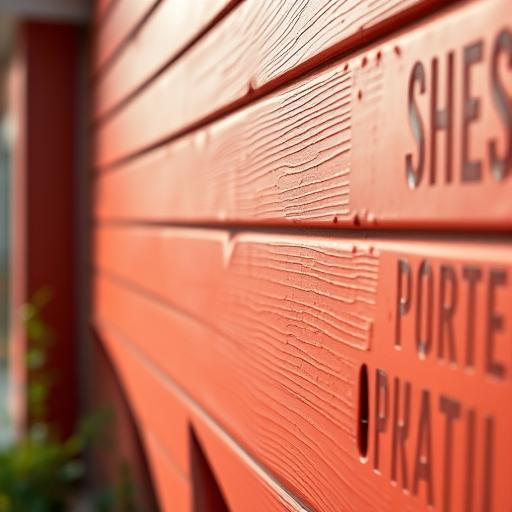
The Magic of Paint for Indie Creators
For independent creators, a captivating backdrop is crucial for producing quality content, but professional studio space can be very expensive. Getting inspiration from professional work, like projects completed by exterior painters edmonton, shows how a single change can completely redefine a space without a massive budget. Paint is the secret weapon for content creators everywhere, from YouTubers to indie filmmakers.
Paint is a fantastic medium because it is affordable, accessible, and has a huge visual impact. The right color can completely alter the mood of a room, influencing how your audience perceives you and your content. It’s an effective method to establish your brand’s aesthetic and make your videos or streams look much more polished and intentional.
Planning Your Painted Set: Color Theory 101 🎨
Before you pick up a brush, you need a plan. The first step is to think about color and the message you want to send. Do you want your space to feel energetic and exciting, or calm and thoughtful? Warm colors like reds, oranges, and yellows tend to bring energy, while cool colors like blues, greens, and purples often create a more relaxed atmosphere.
Think about the psychology behind your color choices. A deep blue might be perfect for a serious discussion channel, while a bright teal could be great for a fun, lighthearted DIY channel. Create a simple mood board with colors, textures, and images that match the feeling you want for your set. This will help you stay focused when you get to the paint store.
Beyond the Solid Wall: Creative Painting Techniques
Who says a set has to be one solid color? You can create incredible depth and visual interest using simple painting techniques. Color blocking is a fantastic method where you paint large, solid blocks of color next to each other. This can be used to frame your shot, define different areas of a room, or just add a pop of modern style to your background.
Another great idea is to use painter’s tape to create crisp geometric patterns. Chevrons, stripes, or a series of triangles can make a wall look custom and high-end. You don’t need to be a master artist to do this; a roll of tape and a level are your best friends. These simple additions can make your small space appear more versatile on camera.
The Power of the Accent Wall
If painting an entire room feels like too much, consider the mighty accent wall. This is a classic interior design trick for a reason: it works. By painting a single wall a different color from the others, you create an instant focal point. This is perfect for creators because it naturally draws the viewer’s eye to you as you sit or stand in front of it.
Your accent wall should be the one that appears most often in your shots. Choose a color that complements your skin tone and your branding. It could be a bold, contrasting shade that makes a statement or simply a darker, more saturated version of the other walls’ color for a subtle, sophisticated effect. It’s a simple change with a big payoff.
Choosing the Right Finish: Matte vs. Satin vs. Gloss ✨
The color of the paint is only half the story; the finish, or sheen, is just as important for on-camera applications. For most video backdrops, a matte finish is your best choice. Matte paint absorbs light rather than reflecting it, which means you won’t get any distracting glare or hotspots from your studio lighting. This gives you a clean, professional look.
Satin or eggshell finishes have a slight sheen, making them more durable and easier to clean. While not ideal for a primary backdrop due to potential reflection, they can be a good choice for a wall that’s not directly behind you. High-gloss paint should almost always be avoided for walls on a set, but it can be used on furniture or props to create a specific, stylized look or to add a “wet” appearance.
Prepping Your Space for a Perfect Paint Job 👍
Excellent results come from excellent preparation. Before you even think about opening a can of paint, you need to get the wall ready. Start by cleaning the surface with a mild soap and water solution to remove any dust or grime. Fill any nail holes or cracks with spackle, let it dry, and then sand it down for a perfectly smooth surface.
Next, protect your space. Use painter’s tape to create sharp lines along the ceiling, baseboards, and any trim. Cover your floors and any nearby furniture with drop cloths. Applying a coat of primer is a step you shouldn’t skip, as it helps the paint adhere better and can make the true color pop with fewer coats, saving you time and money.
Lighting Your Newly Painted Set 💡
Your job isn’t quite done once the final coat of paint is dry. The way you light your new set will have a huge effect on how the color appears on camera. The color temperature of your lights—whether they are warm (yellowish) or cool (bluish)—can dramatically alter the appearance of your painted walls. A gray wall can look warm and inviting or cold and sterile based on the light you use.
Experiment with your lighting setup. A standard three-point lighting system (key light, fill light, and backlight) will help separate you from your background and make the scene feel three-dimensional. Adjust the position and intensity of your lights to see how they interact with your new wall color and finish. This final step is what brings your budget-friendly, professional-looking set to life.
